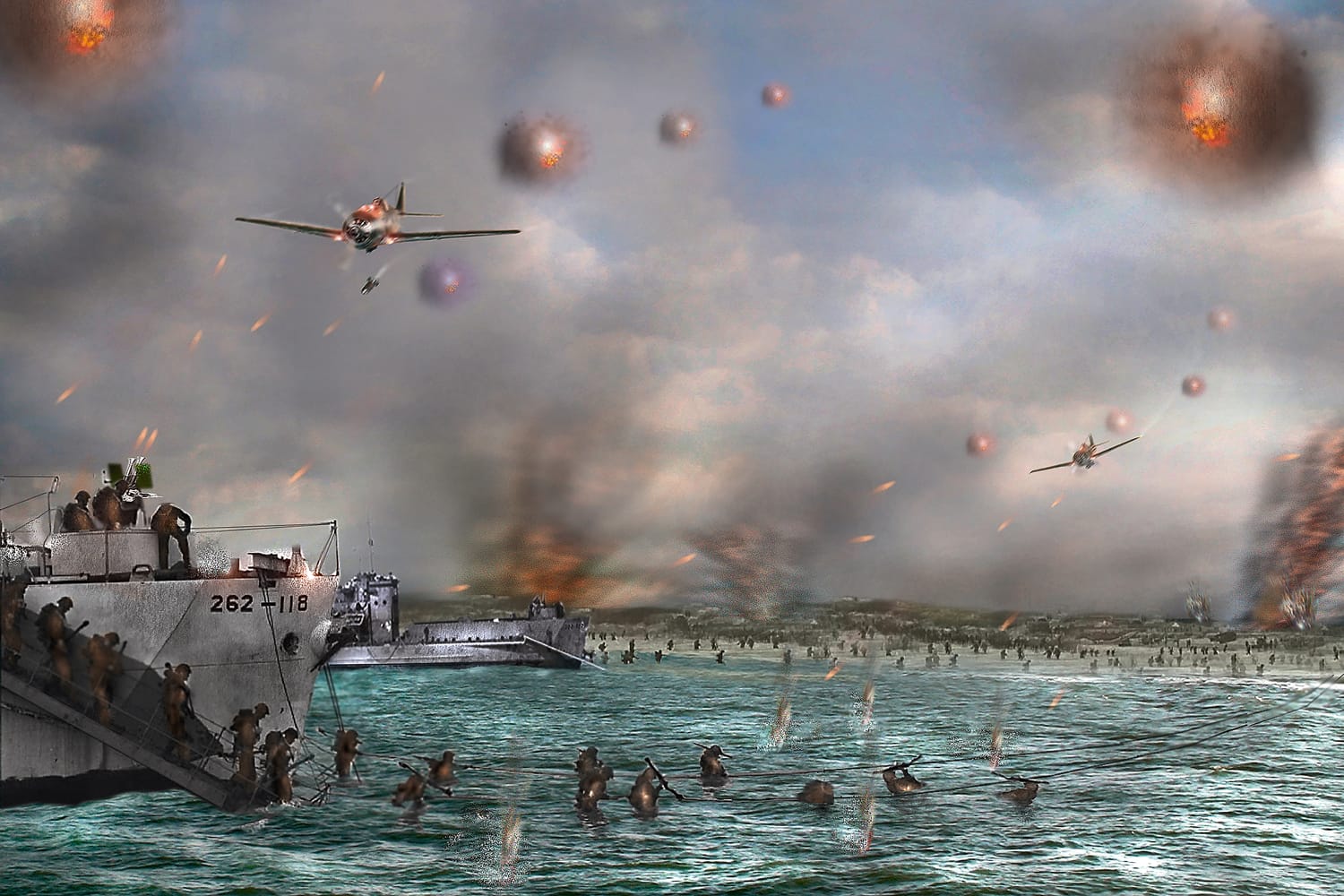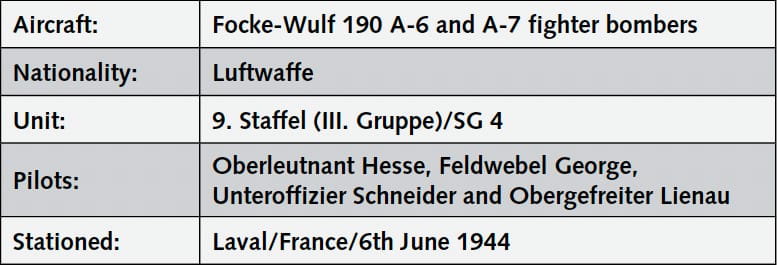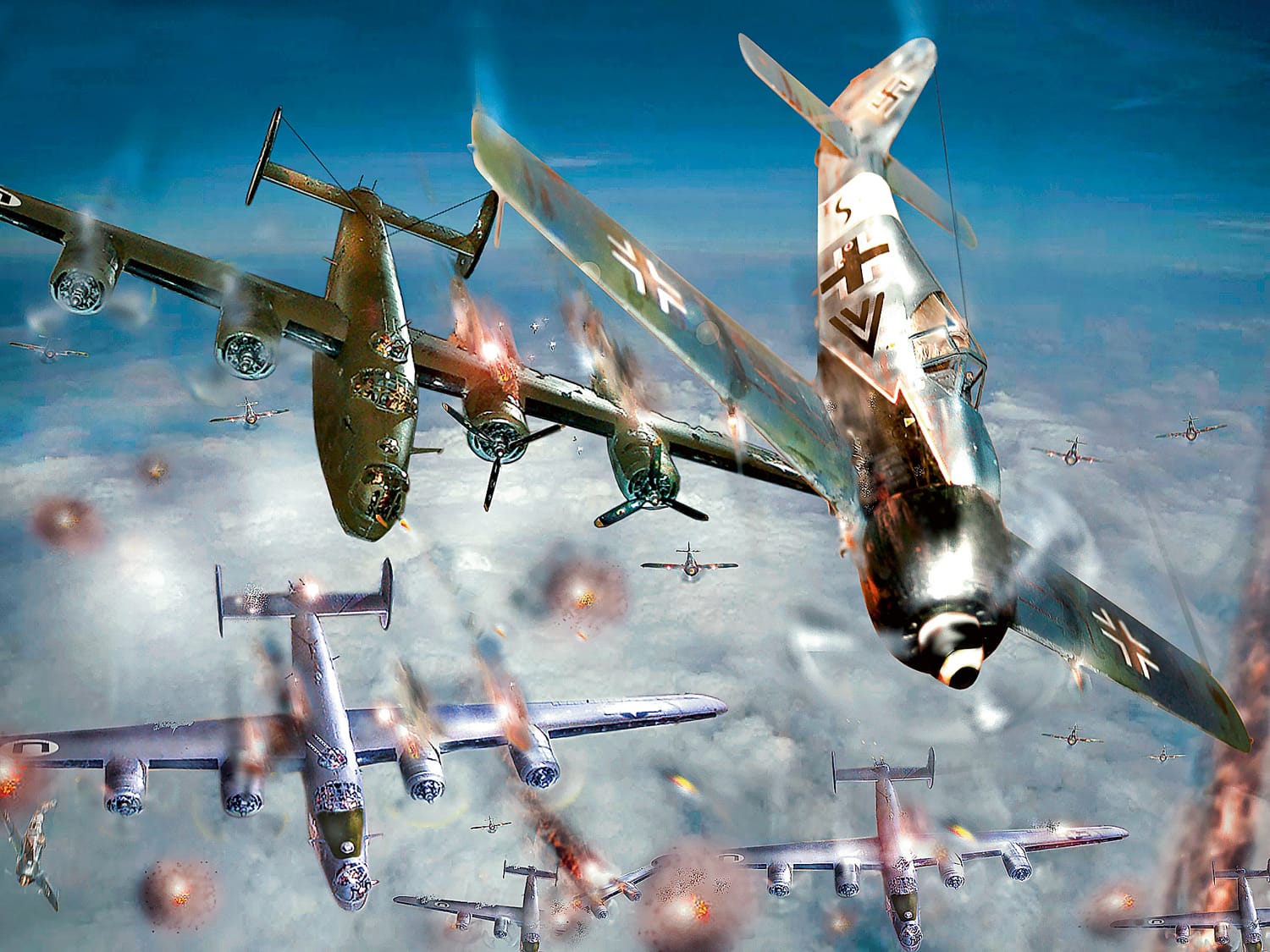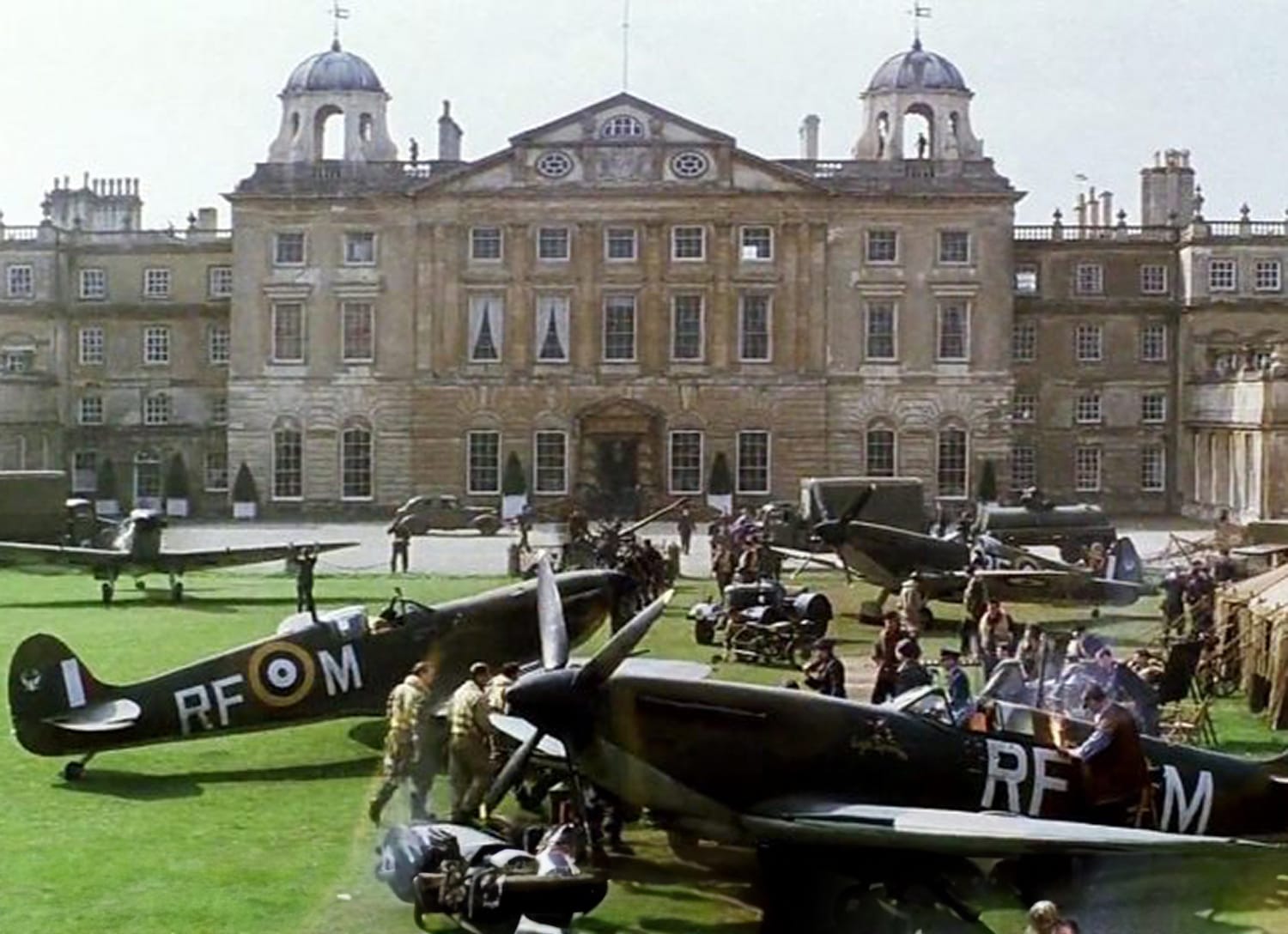The attack by German fighter bombers on the British landing fleet on D-Day, 6 June 1944
A long day – a decisive mission
Target: St. Aubin sur Mer—Sword Beach
A long day, indeed! At 17.19 hours (German time) four Focke-Wulf 190s took off for the first fighter bomber attack on the allied beachhead in France. They were Oberleutnant Hesse, Feldwebel George, Unteroffizier Schneider and Obergefreiter Lienau of 9. Staffel. As they crossed the coast near St. Aubin they reported the following reconnaissance information: “In grid quare 1065 there are warships, also two cruisers as well as destroyers firing on the beach. Heavy disembarkation is taking place near St. Aubin“, and the attack target: “400 ton (GRT) landing craft on the beach outside St. Aubin (grid square 10672).“ The location related to Saint-Aubin-sur-Mer—at the western end of the British landing sector, Sword Beach, eight miles west of Ouistreham, near Caen. Evidently even by now, the evening of the “Longest Day“, the British had not yet succeeded in overcoming all resistance, although it would only be a matter of time.
Successful resistance despite being outnumbered
The four German fighter bombers were as hopelessly outnumbered as Pips Priller and his wingman, Wodarczyk, had been a few hours earlier. Their tour-de-force would later become renowned. The names of Hesse, George, Schneider and Lienau, however, were little known. Nevertheless, these four pilots managed to “destroy—with direct hits“ two landing craft with their SC-500 (500 kg, 1,102 lb) bombs. Each of the Focke-Wulfs carried one of these heavy bombs beneath the fuselage. Two of the four pilots had evidently hit the bullseye!
The figure “400 GRT (gross register tonnage)“ in the documentation relating to this mission clearly indicates that it refers to the destruction by direct hits of American Landing Craft Infantry (Large)—LCI(L) (385 GRT) or Landing Craft (Tank) LC (T) (450 GRT), which had been made available in large number to the Royal Navy. For the graphic representation of this remarkably courageous attack, therefore, the LCI (Large) has been chosen.
The pilots reported encountering serious defensive resistance to the attack from enemy light and medium anti-aircraft guns, and furthermore twelve Typhoons and Spitfires had been in the vicinity. However, the German pilots had been able to escape these. The Schwarm of four fighter bombers finally landed without incurring any losses.
6th June 1944




Ebenfalls interessant…

The final kill of the ace of aces, Erich Hartmann, the most successful fighter pilot of all time
Dangerous encounter in the airIn March 1945 a Russian bombing attack on Prague was reported. Hartmann took off with four Me 109s. A Russian formation…
Weiterlesen
Sturmjäger – cuirassiers of the air
Air battle over Germany: the attack on hydrogenation plants and aircraft factoriesIn the early hours of the morning of 7th July 1944 756 B-17 Flying…
Weiterlesen
That’s how historic air battles get botched by Hollywood
Time and again the ignorance and nonchalance with which even highly renowned directors simply ignore historic details is fascinating. They do this in spite of…
Weiterlesen